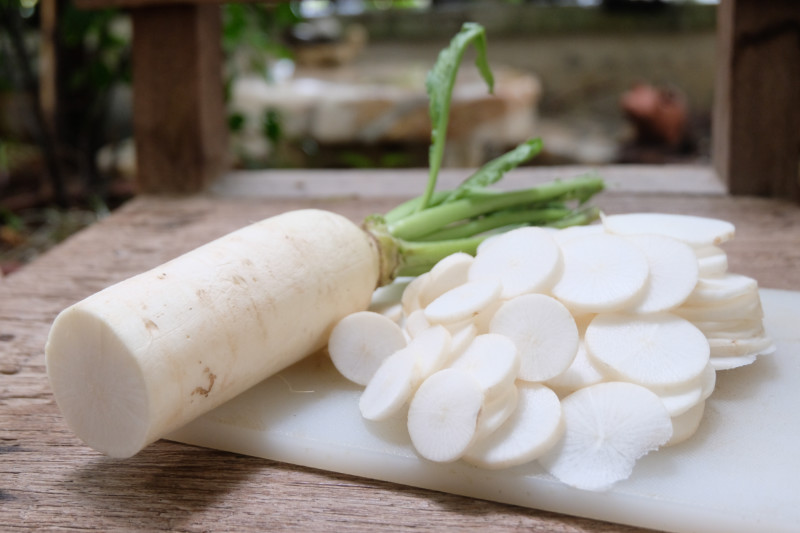https://cdn.steemitimages.com/DQmdSa3wcFJmEFxb2oPd9VZ4WxPyJ7WuRrPLk6gE526C4Yu/daikonradishrecipe.jpg
[source](https://www.google.com/url?sa=i&source=images&cd=&cad=rja&uact=8&ved=2ahUKEwim-KXe3enhAhXvs1kKHaSgCqkQjRx6BAgBEAU&url=https%3A%2F%2Fwww.zliving.com%2Frecipes%2Fdaikon-radish-recipe%2F&psig=AOvVaw1Eg0DfNnV3a5GtvB8Nokvs&ust=1556229710402468)

Community @steemit, greetings from @ rosmarycar91. Daikon is a subspecies of radish of the cabbage family. It is the closest relative of radish and garden radish. However, in contrast to the composition of ordinary radish, the root does not contain sharp mustard oils, and therefore does not have the spicy and astringent taste, like a simple radish. Thanks to that daikon is popular and loved all over the world. Daikon is a very healthy product due to its high content of vitamins and active principles. Using daikon, 100 grams of pulp root contain 35% of the daily intake of vitamin C. That is, 300 grams of product will be sufficient to provide the human body with a daily rate. The composition of daikon contains salts of potassium, magnesium, iron, phosphorus, calcium, vitamins of group B. Also in the composition of daikon there are biologically active substances, including phytocides, which have pronounced antimicrobial properties. Thanks to its action, the benefit of the daikon for the body is obvious: the use of Japanese radish in food protects against infections, strengthens the immune system and has a bactericidal effect to exacerbate chronic diseases of the ear, nose and throat. . At the same time, Japanese radish is an extremely dietetic product: the caloric content of daikon is only 21 kcal per 100 grams. Because of this, it is recommended that Daikon be consumed by overweight or metabolic disorders. The raw Japanese daikon radish is exclusively property useful for excreting toxins and radioactive substances, as well as breaking harmful cholesterol. In the east of their leaves they often apply to wounds, make a compress of grated root, facials and hair, cook out of it lotions and ointments. Daikon is eaten raw and to form heat treated. The daikon, It can be salted and pickled, served as a separate dish or as part of salads or vegetable sandwiches. Daikon is mainly a root vegetable, but nevertheless, the remaining parts are also tasty and edible. Young leaves and stems are used to make salads, and they are also a very popular ingredient for sushi. The Daikon leaves are the most used in Chinese and Japanese cuisine.

Originally posted here: https://steemit.com/naturalmedicine/@rosmarycar91/daikon-and-its-benefits


No comments:
Post a Comment